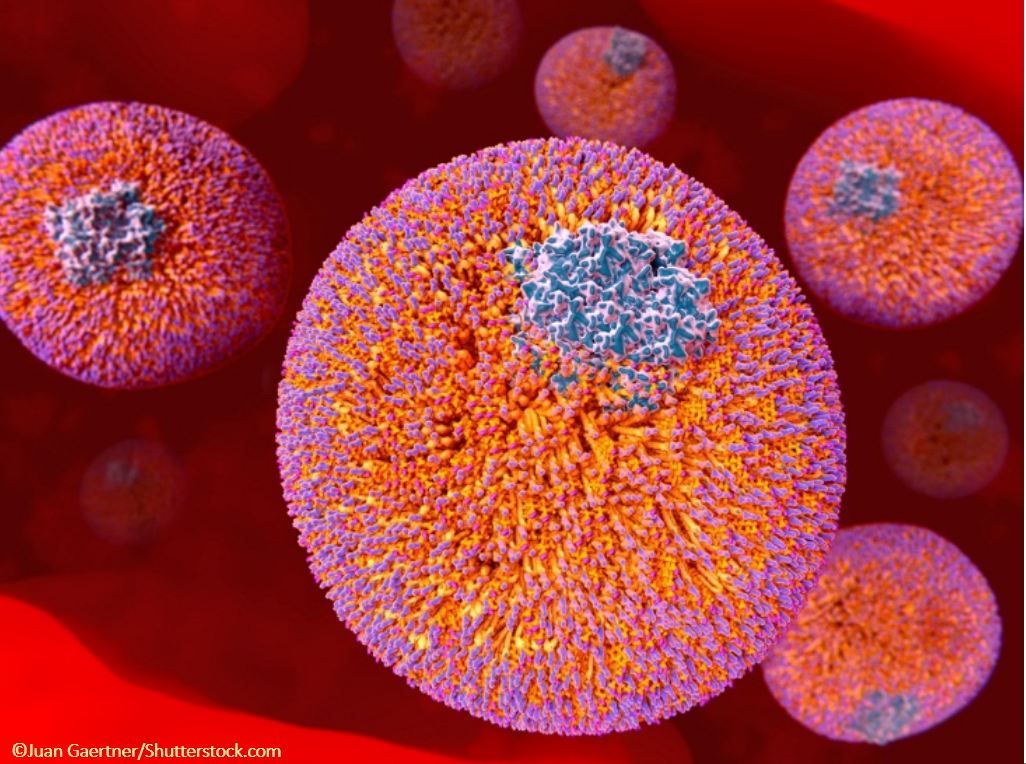- Clinical Technology
- Adult Immunization
- Hepatology
- Pediatric Immunization
- Screening
- Psychiatry
- Allergy
- Women's Health
- Cardiology
- Pediatrics
- Dermatology
- Endocrinology
- Pain Management
- Gastroenterology
- Infectious Disease
- Obesity Medicine
- Rheumatology
- Nephrology
- Neurology
- Pulmonology
Severe Cholesterol Levels Poorly Treated
Treatment rates for dangerously high cholesterol levels remain low, according to a new study.
©Juan Gaertner/Shutterstock.com

Treatment rates for dangerously high cholesterol levels remain low – less than 40% of people with severe elevations in cholesterol are being prescribed appropriate drug treatment, according to a new study.
A nationally representative, cross-sectional study used data from the 1999-2014 National Health and Nutrition Examination Survey (NHANES) to estimate prevalence rates of self-reported screening, awareness, and statin therapy among US adults aged 20 years and older with severely elevated low-density lipoprotein (LDL) cholesterol levels of 190 mg/dL or higher. Additionally, a subgroup of patients with familial hypercholesterolemia (FH), an increased risk of early cardiovascular disease, was considered.
The researchers published their results on March 26, 2018 in Circulation.
The discrepancy between cholesterol screening and medical treatment was most pronounced in younger patients, uninsured patients, and patients without a regular source of healthcare, such as a doctor’s office or an outpatient clinic.
“Young adults may be less likely to think that they are at risk of cardiovascular disease, and clinicians may be less likely to initiate statin therapy in this population,” stated the researchers, led by Emily Bucholz, MD, PhD, MPH, Department of Medicine at Boston Children’s Hospital in Massachusetts. “It is possible that lifestyle modifications continue to be prescribed as an initial treatment prior to initiating statin therapy.” Both the original 2002 National Cholesterol Education Program’s Adult Treatment Panel III (ATP-III guidelines) and the current American College of Cardiology and American Heart Association cholesterol guidelines recommend initiation of statin therapy in patients with LDL cholesterol at or above 190 mg/dL.
The NHANES survey shows the estimated US prevalence of definite/probable FH was 47%. While the estimate of severe dyslipidemia was 6.6%.
The frequency of cholesterol screening and awareness was high (>80%) among adults with definite/probable FH or severe dyslipidemia. However, statin use was uniformly low: 52.3% of adults with definite/probable FH and 37.6% of adults with severe dyslipidemia.
“Only 30.3% of patients with definite/probable FH on statins were taking a high-intensity statin,” the researchers stated.
The prevalence of statin use in adults with severe dyslipidemia increased over time from 29.4% to 47.7%, but not faster than trends in the general population, which went from 5.7% to 17.6%. Older age, health insurance status, having a usual source of care, diabetes mellitus, hypertension, and having a personal history of early atherosclerotic cardiovascular disease were associated with higher statin use.
“Despite the high prevalence of cholesterol screening and awareness, only about 50% of adults with FH are on statin therapy, with even fewer prescribed a high-intensity statin; young and uninsured patients are at the highest risk for lack of screening and for undertreatment,” concluded the researchers.
The study highlights, “an imperative to improve the frequency of cholesterol screening and statin prescription rates to better identify and treat this high-risk population,” they added.
Additional studies are needed to better understand how to close these gaps in screening and treatment, noted the researchers.
References:
Bucholz EM, Rodday AM, Kolor K, Khoury MJ, de Ferranti SD. Prevalence and predictors of cholesterol screening, awareness, and statin treatment among US adults with familial hypercholesterolemia or other forms of severe dyslipidemia (1999-2014). Circulation. 2018;117.
Oral PCSK9 Inhibitor Enlicitide Meets All End Points in Phase 3 Hypercholesterolemia Trial
September 2nd 2025At week 24, patients receiving once-daily enlicitide demonstrated statistically significant and clinically meaningful reductions in low-density lipoprotein cholesterol compared with placebo.
